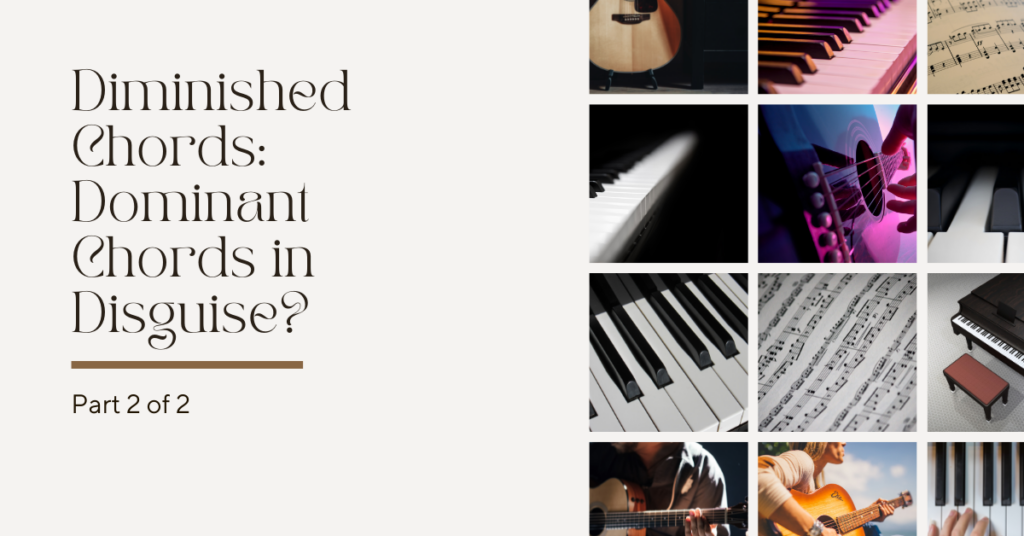I get asked a lot “How do you create those BIG chord voicings and Jazz Piano Chords?” Well, it is not as difficult as it might seem.
In this article I am going to share with you my thoughts on good vs. poor chord voicings.
What is a chord voicing?
Chord voicings are basically how you arrange the notes of any chord. For instance, let’s use a C Major triad as an example. We could play all three notes C-E-G together and play them up high on the keyboard or way down low. We could choose to re-arrange the notes so that the note E or G is the bottom note. So, it might look like this:
C <— top note
G
E <— bottom note
Or like this:
E
C
G <– bottom note.
You could even go so far as to play the lowest C on the piano, have someone play an E in the middle and someone else play the highest G. So, chord voicings are all about how you arrange the notes of any chord. Now this last example is extreme and not practical for everyday use on the piano. But it is interesting because when you hear a symphony or large orchestra, this IS what is going on. The different instruments space out the notes of the chord with basses usually on the bottom and violins or instruments like flute, piccolo on top…usually.
Low Interval Limits
When creating these chord voicings it is important to understand that certain intervals have lower limits. Go to your instrument and play a C-E together as low as possible. It will not sound very pleasant on a piano and you would probably say that it is “muddy” or even indistinguishable. Whereas the interval of an octave can be played all the way down to the low ‘A’ on the piano.
Octaves and Fifths can be played the lowest on the piano.
Thirds and Fourths can not go as low. A Major 3rd can go about as low as an octave and a half below middle C.
Seconds sound good to about an octave below middle C.
Now, it is important to realize that these “rules” are subjective and what is tense to one person might be pleasant sounding to another.
Creating Better Chord Voicings and Big Jazz Chords
When creating chord voicings here are a few tips that will help you maximize your chord sound.
- Remember the defining notes of the chord are the 3rd and 7th and the root if you are playing without a bass player.
- Try to avoid chord voicings built using only 3rds. This is very subjective and is a “soft” rule.
- Use tensions to create fuller sounding chords
Let’s just stick with these three tips for right now while we analyze the example below. You’ll see that the “good” example avoids a chord voicing built entirely of thirds by playing the Root-5th-7th in the left hand. By leaving out the 3rd in the left hand, we also “open up” the sound more and avoid those lower interval limits.
You’ll also notice that the “good” voicing adds the 9th for some color to the chord. The example also contains both the 3rd and the 7th which help define the chord quality.
Now, the “poor” example is not really that bad, but it is more stale than the first voicing because it is basically “stacked” 3rds and does not have much “intervalic creativity”.
Chord Interval Creativity
Looking at the good example again, you’ll see that the intervals from bottom to top are: 5th, 3rd, 3rd, 2nd, 3rd, 3rd, 3rd.
The intervals of the “poor” example are: 3rd, 3rd, 3rd, -6th, 3rd, 3rd.
So, it is easy to see that the “good” example has more intervalic creativity in the chord voicing than the “poor” example. By adding in different intervals you are able to take a bland sounding chord and add a lot of spice to it.
Conclusion
The most important thing to remember is that these voicings are subjective. You can play both of these chords for someone and they’ll dislike both of them or like the “poor” example over the “good” one. However, with that said, following these tips will help to “fatten up” your chord voicings and create smoother transitions between chords.
If you would like to learn more about Big Chords, Progressions & Fills please take a look at this lesson as part of a PianoWithWillie online membership.

